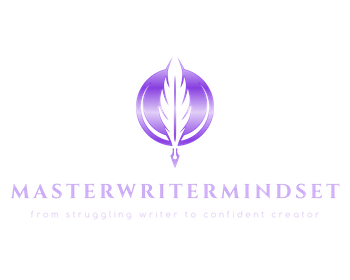When starting my blog, I made several mistakes.
It wasn’t this one. It was another one called “Whooz Voice.” Yeah, I used the weird spelling because I couldn’t get the real spelling as a domain name!
Anyway, the blog was similar to this one in that it focused on finding and following your own voice as an artist. It didn’t do well, though. There were many reasons, but I’ve got five below that I’ve since learned are really important if you want your blog to succeed.
Starting My Blog Mistake 1: Writing in the Wrong Niche
When I launched my blog, I picked a niche I thought would fit with my passions and interests. It did, to some extent, but the problem was I had little expertise in it.
I enjoyed researching ideas about finding and following your voice, but I didn’t have enough life experience or hard-won skills to support the writing I was doing. In the end, it didn’t prove valuable enough for readers.
On top of that, after about six months, I started running out of ideas. It became harder to determine what I wanted to write about or find new information readers might enjoy. I’ve since learned that if you run out of ideas, you’re definitely in the wrong niche!
Blogging is a long game. To stay consistent, write about something you’re passionate about and knowledgeable or skilled in while also considering what your audience wants.
How to avoid this mistake:
- Make a list of your interests, skills, strengths, and experiences.
- Research what topics are in demand and where you can offer value. Think: How can I combine what I’m interested in and good at with what people want to read?
- Choose a niche that excites you and aligns with your long-term goals.
Starting My Blog Mistake 2: Failing to Write Good Headlines
When I started my blog, I tried to write good headlines, but I had none of the tools that are available to writers today. I didn’t know about using emotional or powerful words to help increase interest and curiosity. I did my best, and sometimes it worked, but often, the headlines weren’t urgent enough to grab attention.
Headlines are the first (and sometimes only) chance to catch the eye of your reader. A well-crafted title can pique curiosity and make readers want to learn more.
How to avoid this mistake:
- Spend time brainstorming multiple headline options for each post.
- Use online tools like AIOSEO’s Headline Analyzer to test effectiveness.
- Experiment with proven headline formulas, like:
- How-To: How to Start a Blog That Gets Noticed
- Lists: 10 Tips for Writing Headlines That Get Clicks
- Curiosity Hooks: What I Learned About Blogging After 3 Big Failures
Starting My Blog Mistake 3: Failing to Use Skimmable Subheads
Early on, my blog posts were walls of text. They may have appeared overwhelming and hard to read, especially for people skimming to find the main points.
I’ve since learned that people read content on the internet differently than they do in magazines or books. Instead of carefully reading every word, they skim down the page. Readers today want content they can easily navigate.
This makes subheadings extremely important. They help break up the text, make your post scannable, and guide readers through your ideas. They can also mean the difference between whether someone stays quickly abandons your article or remains long enough to look through for a minute or two.
How to avoid this mistake:
- Divide your post into clear sections with descriptive subheadings. (Note those used in this post.)
- Use subheadings to highlight key takeaways or guide readers through a step-by-step process.
- Incorporate keywords naturally into subheads to boost SEO. (More on this next!)
Starting My Blog Mistake 4: Neglecting SEO
I knew nothing about SEO (search engine optimization) when I started blogging. Later, I heard a little about it, but it seemed over my head and like something only tech-savvy people needed to worry about.
Meanwhile, my posts weren’t getting as much traffic as they might have because I didn’t optimize them to be found on search engines.
Now, I know that SEO can help increase your odds that the right reader finds your blog. It can also help your blog rank higher in search results, bringing consistent, organic traffic.
It doesn’t have to be complicated. If you are a beginner with SEO, check out this article for some basic info.
How to avoid this mistake:
- Research keywords related to your niche topic using tools like Ubersuggest.
- Make sure your website has a plugin like Yoast to help make SEO easy for you when creating your posts.
- Optimize your title, meta description, and content with relevant keywords.
- Learn the basics of on-page SEO, like using internal links, alt text for images, and fast-loading pages.
Starting My Blog Mistake 5: Ignoring Email List Building
When I first started blogging, I shared my posts on social media, but I was missing the most significant part of the process—getting people on my email list.
While social media can help get more eyeballs on your blog, the real gold lies in those readers who like your content enough to subscribe to your newsletter. Unlike social platforms, where algorithms constantly change, an email list gives you direct access to your audience. That’s access you’re going to want when you’re preparing for your next book release.
I missed out on early opportunities to build lasting relationships with readers who genuinely cared about my content. Now, I make sure that I have a free offer for those readers who want to ensure they don’t miss a post. (Check it out here!)
How to avoid this mistake:
- Start building your email list as soon as you launch your blog.
- To encourage sign-ups, offer a free lead magnet, like a checklist, eBook, or template.
- Use email marketing tools like Mailchimp or MailerLite to grow and nurture your list.
Conclusion
Mistakes are a natural part of blogging, and I’ve learned a lot from mine. If you’re just starting, I hope these tips help you avoid some of my missteps. You may make some other mistakes of your own, but don’t let that stop you!


I enjoy your articles. They are extremely helpful and informative, and I look forward to reading them.
More of the same, please. Thanks.
Thanks so much for that, Paul! I really appreciate that feedback. Happy writing. :O)